Ranked! The 100 best stadiums in the world
The best stadiums in the world from all corners of the globe: this is your ultimate match-going bucket list
20. De Kuip
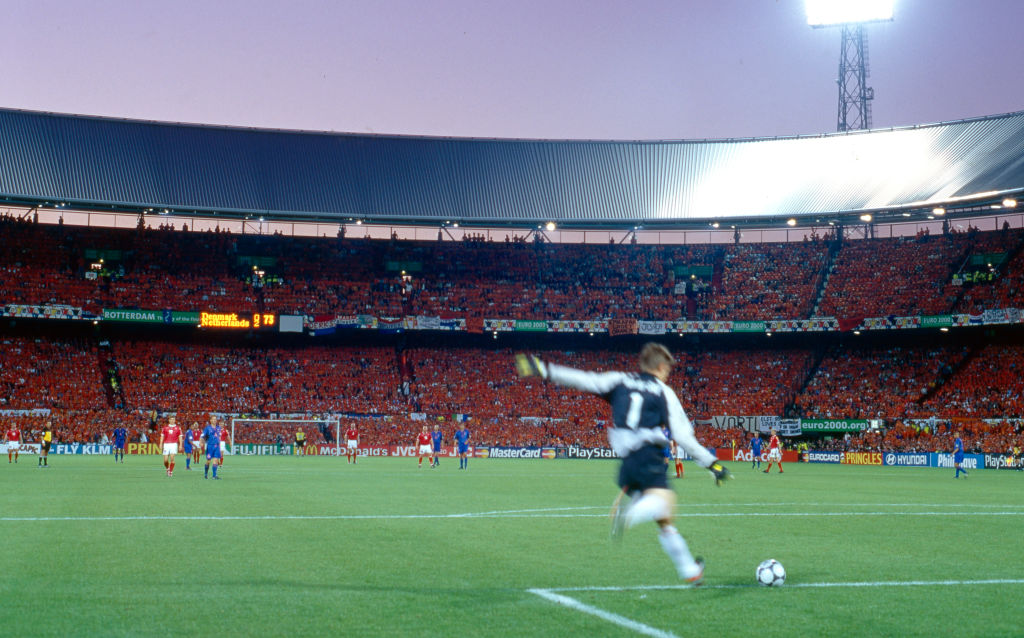
📍 Rotterdam, Netherlands
🏠 1937
🏟 51,117
Inspired by the old Highbury, the stadium more commonly known as De Kuip (The Tub) has been Feyenoord’s home since the 1930s and quickly became a football temple. Hosting 11 European finals over the years, it became a particularly fertile ground for English teams, hosting glory nights for Tottenham (1963), Everton (1985) and Manchester United (1991) in the Cup Winners’ Cup plus Aston Villa’s 1982 European Cup Final win against Bayern Munich.
None of this could have happened had the Nazis progressed in their plan to destroy the stadium, which had been occupied by their forces. The steel and glass structure survived and it’s one of the reasons its acoustic is unique. De Kuip is all about atmosphere. For players it’s quite special, too: the tunnel that leads to the pitch depicts Feyenoord legends lifting the European Cup, while the pitch itself reputedly has the best grass in the world.
After disappointing Dutch performances in the Euro 2016 qualifiers (all played at Amsterdam Arena), many fans wanted the Netherlands to play back at De Kuip. But the stadium faces its own problems, as discussions over its future continue. A year after their plans for building a new 85,000-seat stadium were rejected, Feyenoord announced the 70,000-seat redevelopment of De Kuip for 2015, but the plan was once again postponed. – MM
19. Azadi Stadium
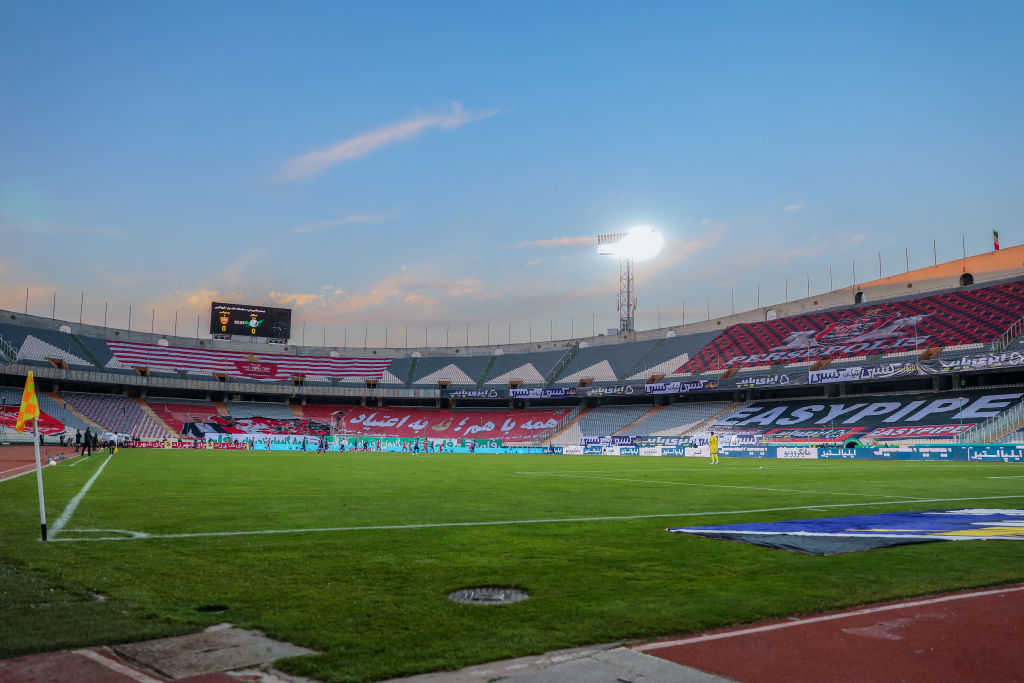
📍 Tehran, Iran
🏠 1971
🏟 78,116
Although not quite as big as it once was, the Azadi (Persian for ‘freedom’, renamed after the Iranian revolution) still generates an incredible noise despite having an athletics track and no roof.
First inaugurated in 1974 for the prestigious Asian games, it now hosts three teams, with players like former Villa and Bolton lefty Jlloyd Samuel having played there for Esteghlal in recent years. With a record attendance close to 130,000 for a game against Australia in the late 1990s, FIFA declared it the biggest-ever crowd for a World Cup qualifier.
Get FourFourTwo Newsletter
The best features, fun and footballing quizzes, straight to your inbox every week.
Talking of international football, Iranian fans were lucky enough to see the legendary Ali Daei score 40 of his 103 international goals here over the years. Sadly, a 2003 renovation ended the days of such enormous crowds, but when at capacity it is still one of the most intimidating arenas to play in. – JF
18. Anfield
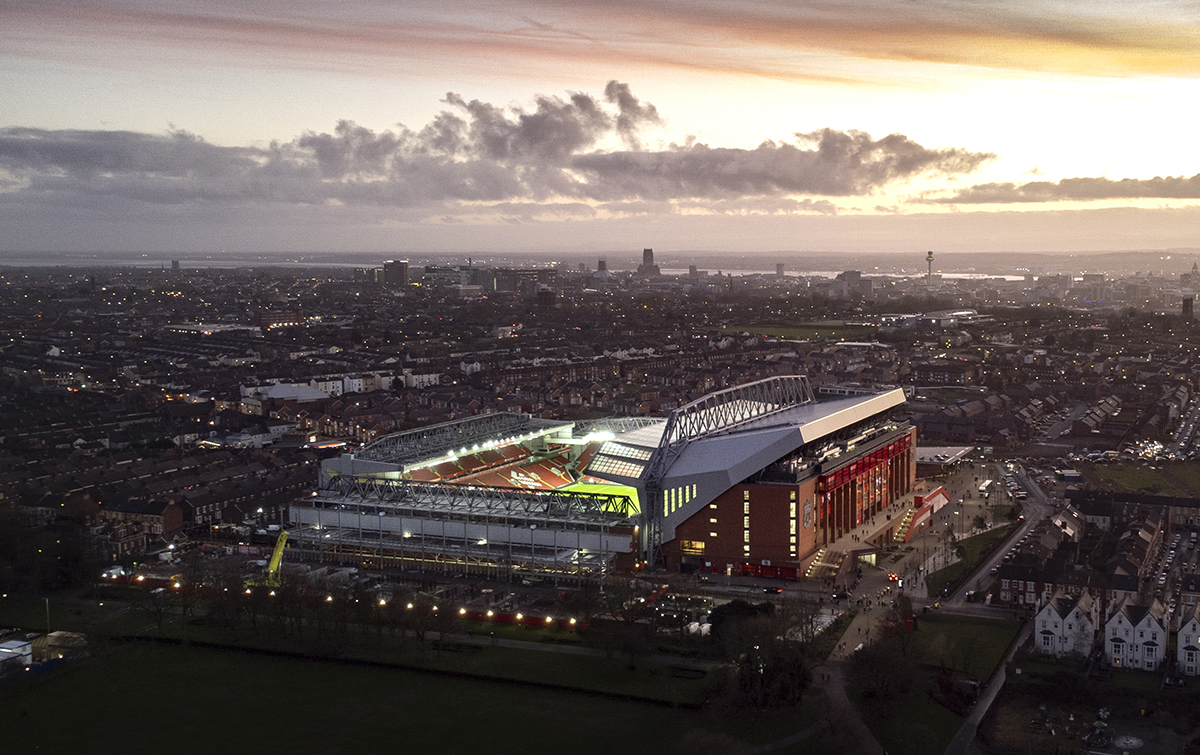
📍 Liverpool, England
🏠 1884
🏟 53,394
Older than the club itself – the ground was Everton’s from 1884 until the 1892 rent dispute that caused the creation of Liverpool FC – Anfield is one of football’s most evocative names, with the Kop one of its most famous stands.
It helped that the club spent two decades hoovering trophies, encouraging a colourful mythology around the stadium’s sacred spaces. Underneath the Main Stand, the revered Boot Room think-tank hatched the plans that prompted the 30,000-capacity Kop into delighted song: few terraces were so renowned for their wit and, frankly, intimidation of opponents and officials.
Much has changed since that golden period – the Boot Room is gone and the Kop now a 12,000-seater, while the Anfield Road and Kemlyn Road stands are now overhauled two-tiered affairs, the latter renamed the Centenary Stand – but the history remains. And so will the club, with relocation shelved in favour of expansion to as much as 59,000.
In recent years, it's been well worth getting in as many Reds as possible. – GP
17. Stade de France
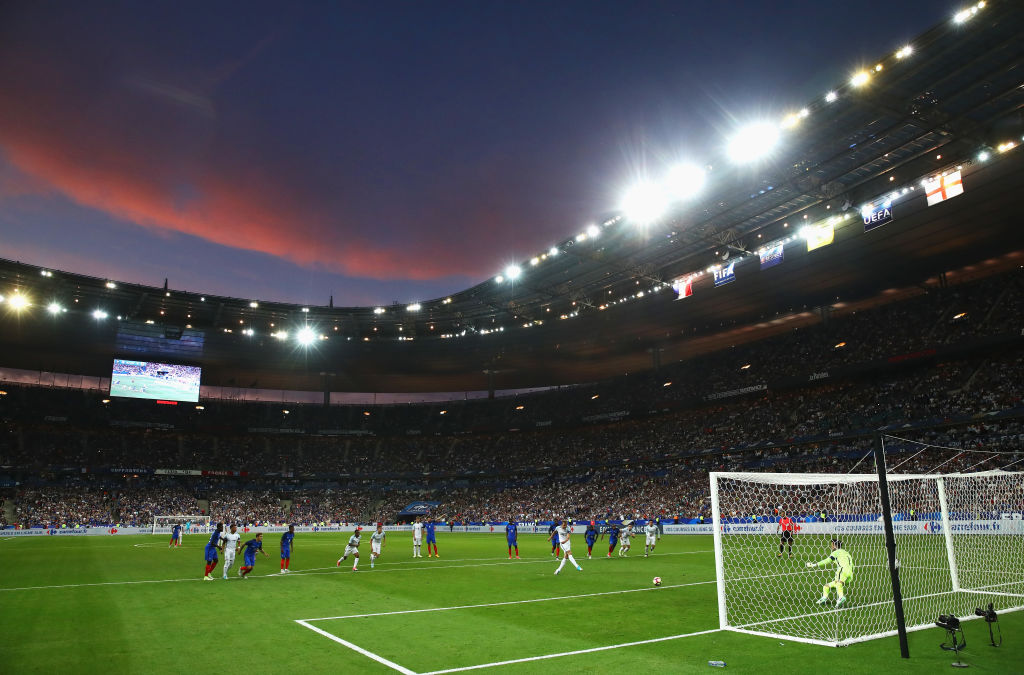
📍 Saint-Denis, France
🏠 81,338
🏟 1998
The fifth-largest stadium in Europe, the 81,000-capacity Stade de France played host to the only World Cup final that Zinedine Zidane managed to get through without headbutting anyone.
Opened in time for France 98, it turned into the glorious venue where Zidane used his head productively, nodding home twice in a 3-0 victory over Brazil in the final. It’s the only stadium to have hosted World Cup finals in football and rugby. Situated in Saint-Denis on the outskirts of Paris, accessible by metro, it was also the stage for Real Madrid’s 2000 Champions League Final victory over Valencia and Barcelona’s 2006 triumph against Arsenal.
Attempts to lure a club side on a permanent basis proved unsuccessful, with Paris Saint-Germain opting to stay at the more fillable 49,000-seat Parc des Princes. The Stade de France’s sheer size remains a sight to behold, particularly from the top tier. – CF
16. Celtic Park
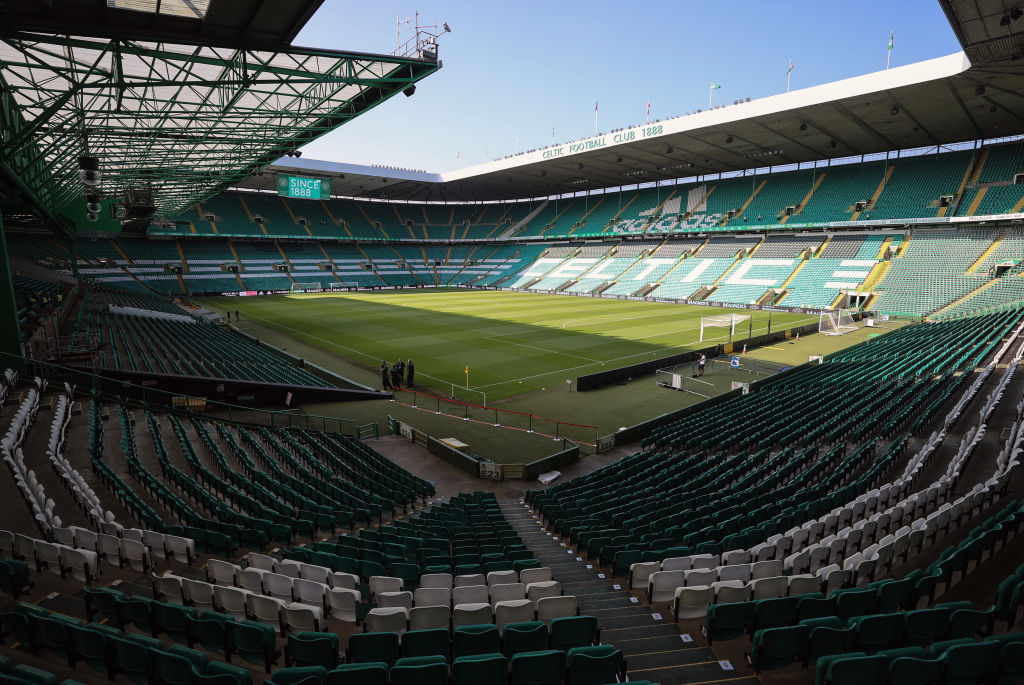
📍 Glasgow, Scotland
🏠 1892
🏟 60,411
No aficionado of football atmospheres can truly say they’ve savoured the best until they enjoy a trip to Paradise – particularly for an Old Firm civil war, where the volume can become truly hair-raising.
There’s history dripping out of the bricks at Scotland’s largest stadium, too – even if wholesale modernisation does mean that little of the actual structure erected in 1892 remains. Back then, it was a multi-sports venue with an athletics track and concrete loop for cycle races, but its traditional ties to Ireland were always in place: the first turf was brought over from County Donegal, and shinty was played as often as football.
Now, it’s a thoroughly modern all-seater that manages to somehow retain the raw madness of the old ‘Jungle’ (Northern Terrace). Aptly for a stadium with a stand cantilevered over a graveyard, there are ghosts in the air here too: of Jimmy Johnstone and Jock Stein – both immortalised in statues outside – and many more hooped legends who have given this place a mythic feel beyond its physical self. – NM
15. Stade Velodrome
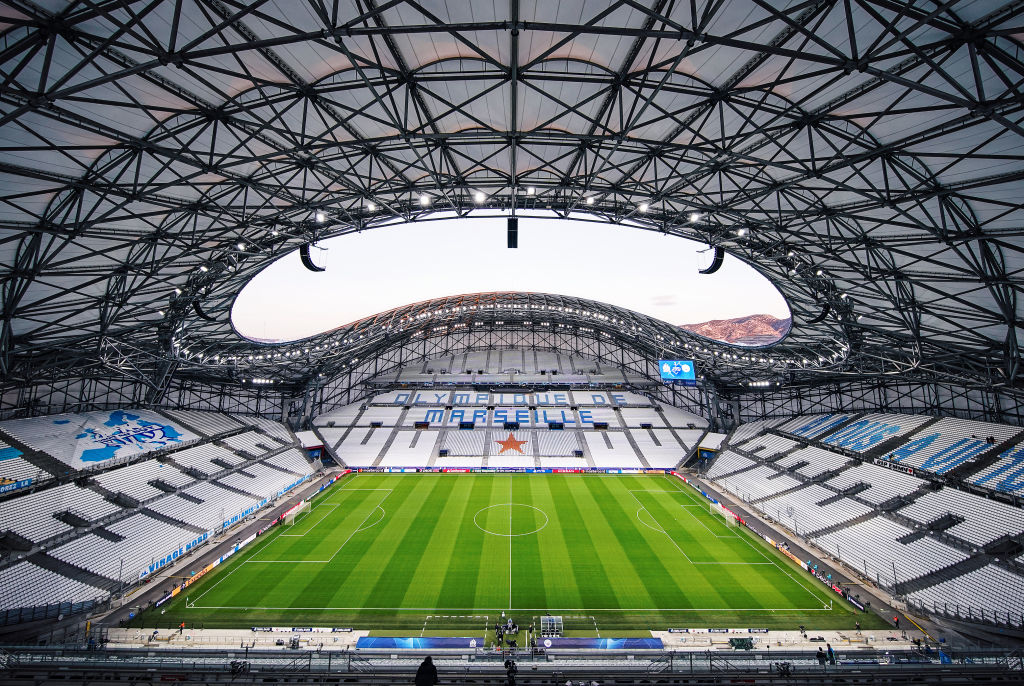
📍 Marseille, France
🏠 1937
🏟 67,394
In an age of uniform, box-shaped modern stadiums, the swooping curves of the Stade Velodrome stand out for all the right reasons. Initially constructed in the 1930s, it remains France’s biggest club football ground, and home to arguably its most successful team, Olympique de Marseille.
The Velodrome was renovated extensively for the 1998 World Cup, but required a further facelift to meet modern standards ahead of Euro 2016. That meant a 95% reconstruction of the western Jean Bouin stand, while the upper tier of the Ganay stand on the opposite side was also refitted. Both were necessary to accommodate the most striking change to the building come the end of restoration works in 2014: the fitting of an ellipsoidal roof.
Rather than masking the structure of the ground, as a roof can sometimes do, the smooth shape of the cover only further emphasises the uniqueness of the Stade Velodrome’s design. It also helps amp up the other distinguishing feature of this stadium: the noise of its passionate, renowned fans. – LR
14. Olympiastadion
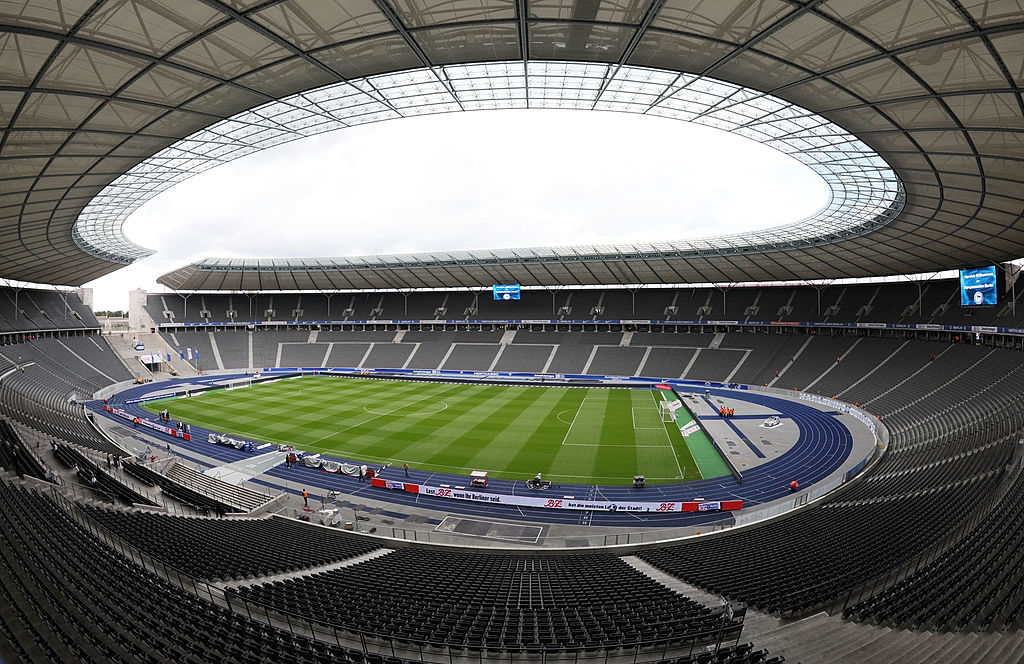
📍 Berlin, Germany
🏠 1936
🏟 74,667
You’ll be hard pushed to find a stadium steeped in history quite like Berlin’s menacing Olympiastadion. Built for Adolf Hitler’s 1936 Olympics and used first as a hub for Nazi propaganda, it was the setting of Jesse Owens’ dazzling gold medal wins in the 100m, 200m, 4x100m relay and long jump which flew in the face of Hitler’s Aryan ideals.
That history is still tangible. Although it is now a multi-purpose arena attracting just over 50,000 Hertha Berlin fans every fortnight, and the venue of last season’s Champions League final, the Olympiastadion’s controversial place in history lives on.
That may not have always been the case, though – in 1998, debate raged about the stadium’s future; some wished for it to be knocked down completely, others were in favour of leaving it to crumble. Renovation won, however, and selection for Germany’s 2006 World Cup ensured this grand old stadium remained intact. – JB
13. Metropolitano Stadium
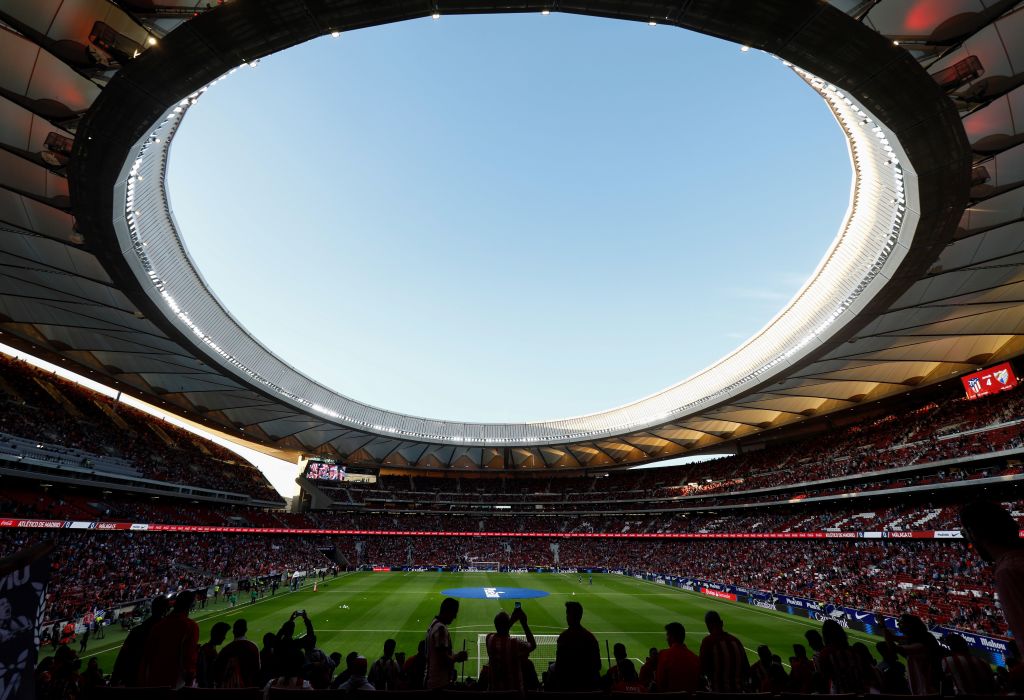
📍 Madrid, Spain
🏠 1994
🏟 70,000
Atletico Madrid's Vicente Calderon was the first all-seater stadium in Spain, with views of the Mazanares river running past and curiously, a dual carriageway literally rumbling under one of the stands. It was going to take something special to convince them to leave.
With sprawling stands that almost burst out beyond the roof and a fervent atmosphere cooked up from Diego Simeone's siege mentality, the Metropolitano is everything great about modern Spanish football. It's stunning to look at, too, with the roof curving over the main structure like a sheet of icing over the edges of a cake, while the ceiling is lit up red at night, but stays bright during the day.
And as with most hotspots, it's the ones that tourists don't flock to that tend to be the more authentic experiences. The crowds tend to be louder at the Metro than either Barça or Real as a result – given that there aren't as many day-trippers. It's a well-kept secret of sorts… and dare we say it's better than the Calderon? – MW
12. Santiago Bernabeu Stadium
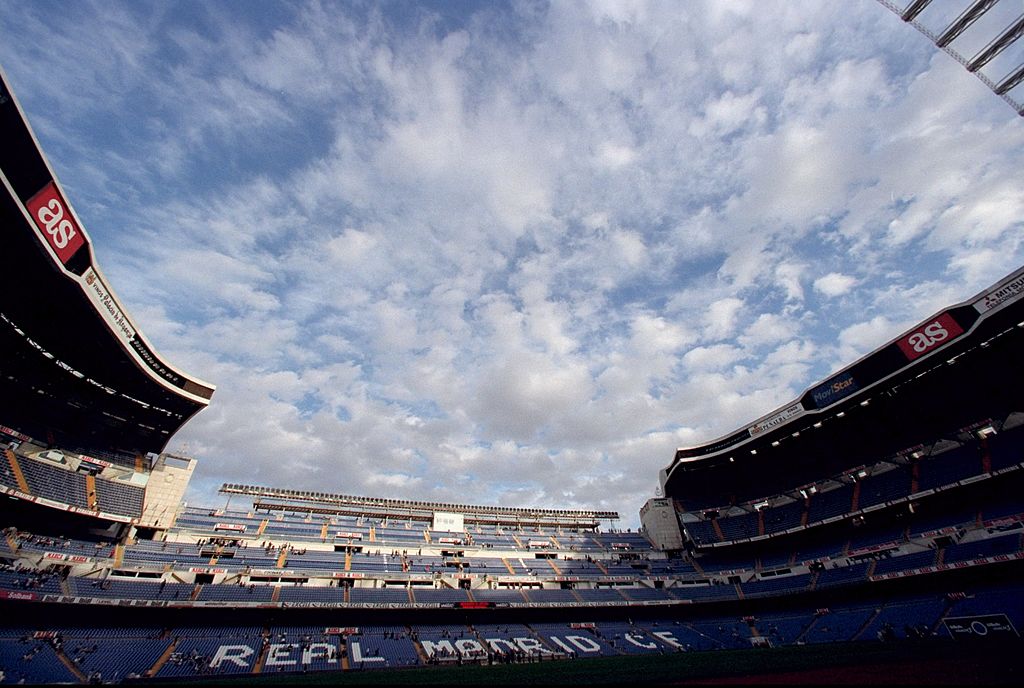
📍 Madrid, Spain
🏠 1947
🏟 83,186
If the Santiago Bernabeu were to suddenly transform into a walking, talking human being – something that would probably provoke an alarmed front page or two in Marca – then Real Madrid’s home would be Albert Einstein.
The most iconic images of the dimension-chasing physicist are of an ageing gentleman, dishevelled and unkempt. There may even be a hint of a few non-visits to the laundry. That’s also the immediate impression of the Bernabeu gained by its hundreds of thousands of tourists every year – pilgrims who emerge from the metro outside of the stadium, and set eyes on the Bernabeu for the first time.
'Dangerously dizzying' is one of the best descriptions of Madrid’s home when standing at the very top of the wrap-around top tier. There is always the feeling that one topple down the stairs would end with a 20,000-foot tumble onto the substitutes warming up far below. It’s no wonder it take a few months before vertigo-suffering new season-ticket holders feel comfortable enough to make the journey to their seats without clinging to safety rails and openly weeping.
But it is these giddy architectural heights that give the Bernabeu such overpowering acoustics. When a capacity crowd of a little over 85,000 are all feeling the vibe, the sound can barely escape – meaning that the players down on the pitch can barely communicate with each other. – MS
11. Johan Cruyff Arena
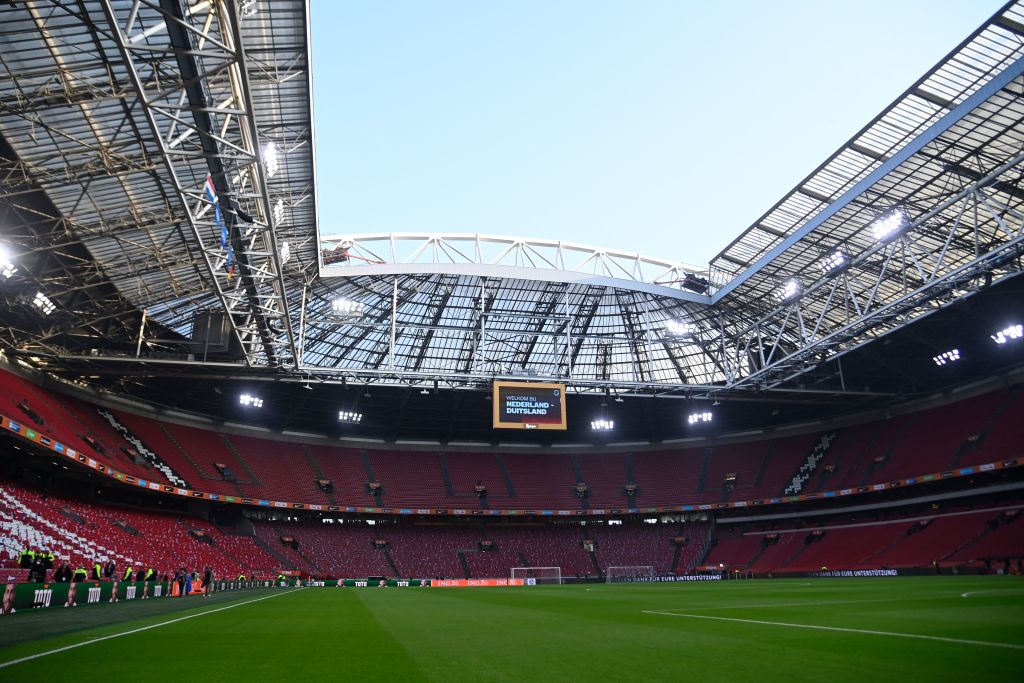
📍 Amsterdam, Netherlands
🏠 1996
🏟 55,865
To put it simply, Ajax’s De Meer stadium was frankly insufficient. The 1930s ground was never particularly big, and with safety concerns its capacity had dwindled to below 20,000. The club had always played their big games at the city’s Olympic Stadium, but clearly needed a more suitable solution.
Costing more than £100m and inaugurated by Queen Beatrix, the Amsterdam Arena certainly fits the bill: retractable roof, amazing visibility (even from lower-tier seats near the corner flag), security cameras everywhere, easy access via public transport, proximity to a tailored shopping mall built in front of the stadium, restaurants with typical and delicious kroketten, and a Skybar named Johan.
A UEFA top-rated stadium, the Arena has hosted the 1998 Champions League Final, 2013 Europa League Final, five Euro 2000 games and the majority of the Netherlands’ recent home games. During construction, Louis van Gaal’s side reached two successive Champions League finals – but that squad was broken up by the Bosman ruling and sales which helped pay the debts, although the fascinating 70-minute tour (€16) will never say so.
History is important at Ajax. The new club museum here quickly became one of the most popular museums in Amsterdam. And since legendary manager Rinus Michels died in 2005, there has been a popular desire to name the stadium after him; the board has refused, but fans keep showing up with banners that read Rinus Michels Stadion. – MM
Current page: The 100 best stadiums in the world: 20-11
Prev Page The 100 best stadiums in the world: 30-21 Next Page The 100 best stadiums in the world: 10-1
Mark White has been at on FourFourTwo since joining in January 2020, first as a staff writer before becoming content editor in 2023. An encyclopedia of football shirts and boots knowledge – both past and present – Mark has also represented FFT at both FA Cup and League Cup finals (though didn't receive a winners' medal on either occasion) and has written pieces for the mag ranging on subjects from Bobby Robson's season at Barcelona to Robinho's career. He has written cover features for the mag on Mikel Arteta and Martin Odegaard, and is assisted by his cat, Rosie, who has interned for the brand since lockdown.
